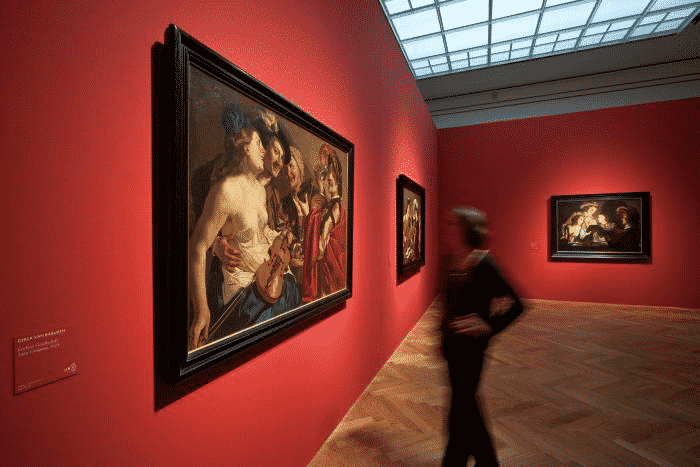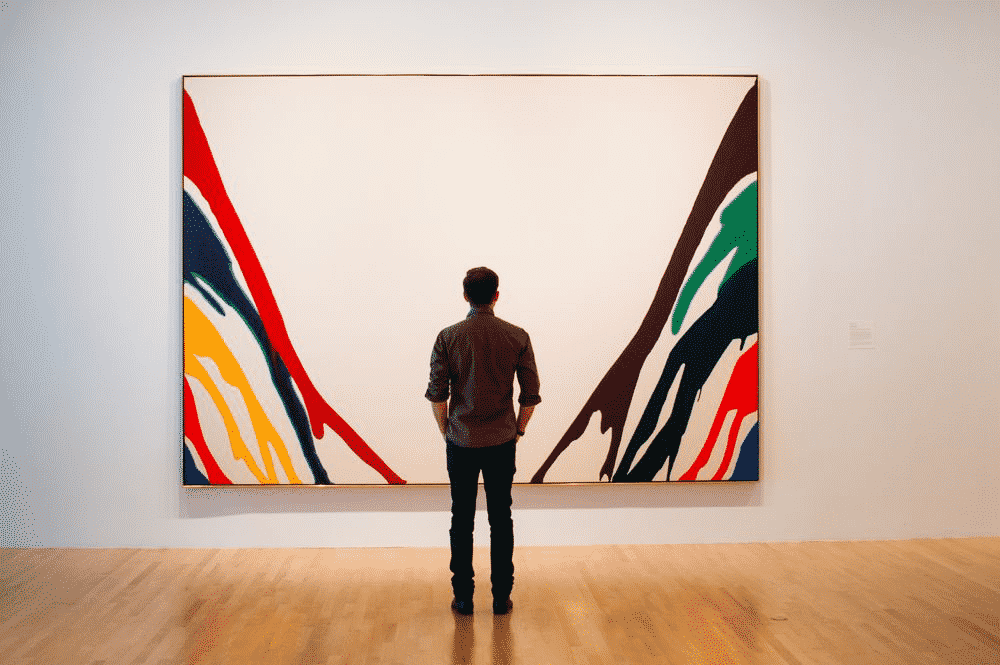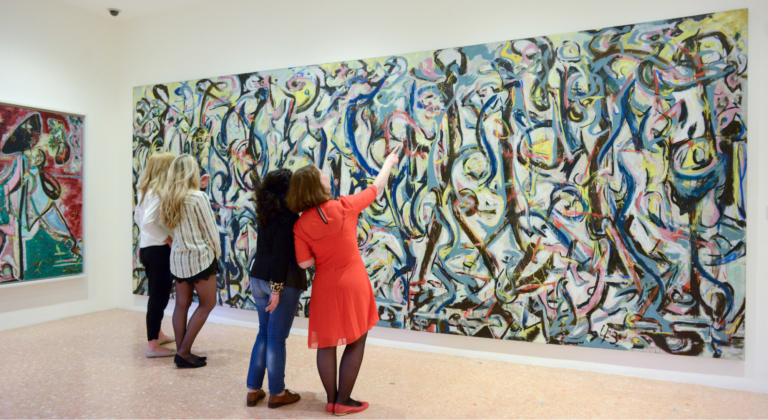Recent studies show that the average visitor of a museum looks at an art piece for less than 30 seconds — 17 seconds being the average. Museum spaces sometimes are not helping this and seem to encourage the “more is more” way of thinking. All the crowds that can push you from one piece to the following faster than you would like to, overwhelmingly large blockbuster exhibitions that do not allow time for reflection and enjoyment of the art, and a troubling lack of seating options can all contribute to the faster pace of exhibition tour. But, the art world has decided to push back against that growing trend. Namely, this pushback is called a Slow Art Movement, and it started as a Slow Art Day.
What is Slow Art Day, and How Did it Begin?
Phil Terry, a founder of the nonprofit Reading Odyssey conceived the idea of Slow Art Day in 2008. The thought occurred to him after he spent hours at the Jewish Museum in New York primarily enjoying two abstract paintings — Jackson Pollock’s Convergence and Hans Hoffman’s Fantasia. A year later, he launched the first official Slow Art Day event in collaboration with 16 museums. The event consisted of several things — first, visitors would sign up to observe five artworks with a volunteer host, spending 10 minutes viewing each piece. The second part included a lunch, where the visitors and the hosts alike discussed the experience over a shared meal. Since 2009, over 700 venues including museums, galleries, artist studios, and public art sites have participated in what has become an annual event.

What is the Slow Art Movement?
After Slow Art Day was established as an annual event, the Slow Art Movement began to gain traction. One of the issues this movement tries to bring attention to is the fact that artists’ works are being practically manufactured these days, meaning that the consumers cannot see and love art for what it is due to the sheer amount of artwork produced every day. To quote the founder of the Slow Art Day, Phil Terry: “Visitors often see art from their phones. Slow art is an antidote to that. By slowing down, it helps us see art in a new way that energizes rather than demoralizes.”
According to the organizers and participants in the Slow Art Day event(s), the main goal is to help the viewer contemplate art and take in the sensory experience as a meditative event. Their intention is to aid the visitor in paying attention to the artwork itself, as opposed to the experience where one mainly considers background information, such as the museum painting labels and wall texts.
Besides giving people time to appreciate an art piece more, think about it and its meaning, look into the details, the artwork’s cultural and historical significance, the Slow Art Movement gives artists the time they need to create their artwork, with less stress from the modern world’s mass-produced expectations.

Slow Art Movement Today
On April 10th, more than 110 museums and galleries around the world have slowed down to create more inclusive environments that allow everyone to learn how to look at and love art. From Canada and the USA to Greece and Slovakia, a large number of museums have taken part in this movement. Moreover, many of those exhibitions were held either entirely online, or had a virtual version, in order to fully accommodate the possible visitors even in times of pandemic!
Keeping this in mind, it is easy to see that the Slow Art Movement is not only concerned with meditation and mindfulness but also with museum accessibility. It is not only the physical accessibility that it has in mind, but also the mental one — many people never consider going to a museum since they do not feel as if they have any knowledge about art to be a part of the visiting crowd.
In years to come, this movement will undoubtedly grow, promoting the public’s reflection over art and genuine appreciation of this meaningful cultural asset for humanity. After all, it started with only 16 museums participating and, as of this year, the number of official participants stands at 110, with over 1,400 individual Slow Art Day events taking place on all seven continents since its official launch in 2010.



![[Left] Kusama with her piece Dots Obsession, 2012, via AWARE, [Right] Yayoi Kusama (Courtesy Whitney Museum of American Art) | Source: thecollector.com](https://www.artdex.com/wp-content/uploads/2024/04/Left-Kusama-with-her-piece-Dots-Obsession-2012-via-AWARE-Right-Yayoi-Kusama-Courtesy-Whitney-Museum-of-American-Art-Source-thecollector.com--300x172.png)



